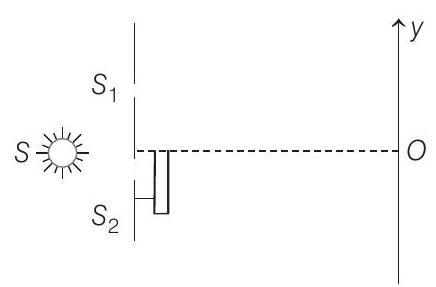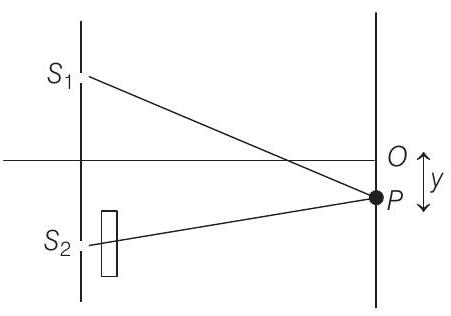Optics 6 Question 49
51. The Young’s double slit experiment is done in a medium of refractive index 4/3. A light of
 thickness
thickness
(a) Find the location of central maximum (bright fringe with zero path difference) on the
(b) Find the light intensity of point
(c) Now, if
(All wavelengths in the problem are for the given medium of refractive index
Show Answer
Answer:
Correct Answer: 51. (a)
Solution:
- Given,
Thickness of glass sheet,
Refractive index of medium,
and refractive index of glass sheet,
(a) Let central maximum is obtained at a distance
Path difference due to glass sheet

Net path difference will be zero when
Substituting the values, we have
or we can say
(b) At
or
Substituting the values, we have
(c) At
For maximum intensity at
The wavelengths in the range 400 to






